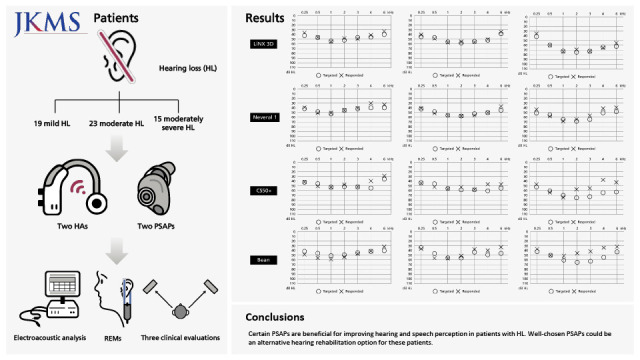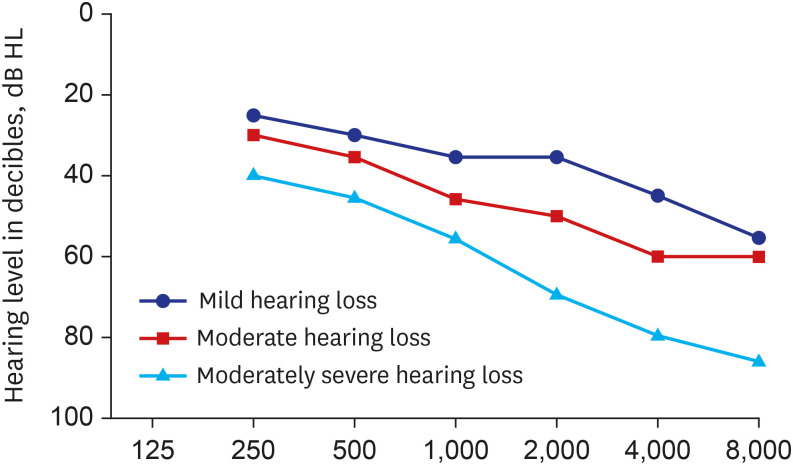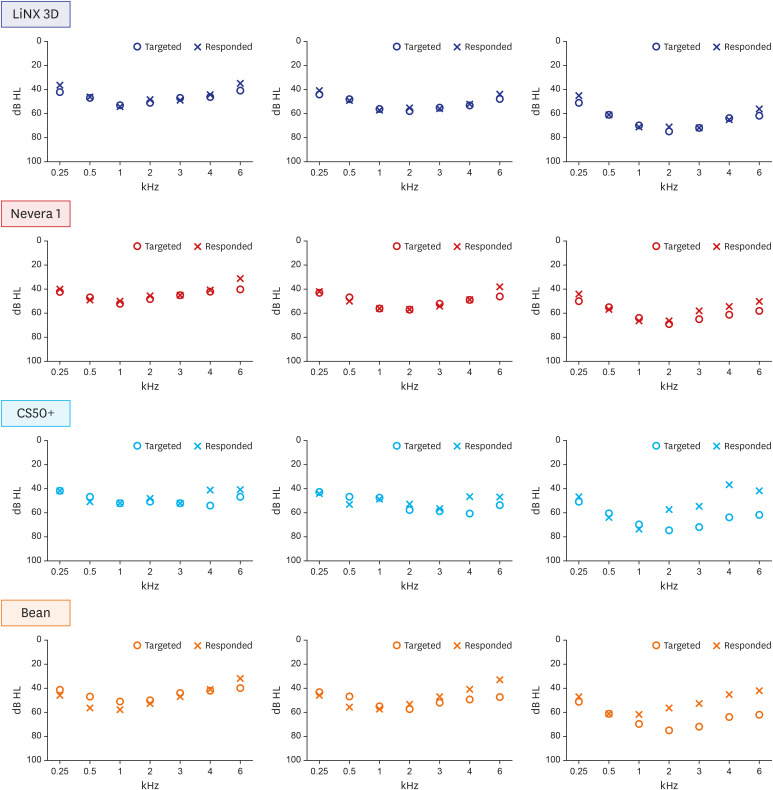2. Collins JG. Prevalence of selected chronic conditions: United States, 1990–1992. Vital Health Stat 10. 1997; (194):1–89.
3. Cosh S, Helmer C, Delcourt C, Robins TG, Tully PJ. Depression in elderly patients with hearing loss: current perspectives. Clin Interv Aging. 2019; 14:1471–1480. PMID:
31616138.
4. Dalton DS, Cruickshanks KJ, Klein BE, Klein R, Wiley TL, Nondahl DM. The impact of hearing loss on quality of life in older adults. Gerontologist. 2003; 43(5):661–668. PMID:
14570962.
5. Lin FR, Yaffe K, Xia J, Xue QL, Harris TB, Purchase-Helzner E, et al. Health ABC Study Group. Hearing loss and cognitive decline in older adults. JAMA Intern Med. 2013; 173(4):293–299. PMID:
23337978.
6. Livingston G, Huntley J, Sommerlad A, Ames D, Ballard C, Banerjee S, et al. Dementia prevention, intervention, and care: 2020 report of the Lancet Commission. Lancet. 2020; 396(10248):413–446. PMID:
32738937.
7. Reed NS, Altan A, Deal JA, Yeh C, Kravetz AD, Wallhagen M, et al. Trends in health care costs and utilization associated with untreated hearing loss over 10 years. JAMA Otolaryngol Head Neck Surg. 2019; 145(1):27–34. PMID:
30419131.
8. Willink A, Reed NS, Lin FR. Cost-benefit analysis of hearing care services: what is it worth to medicare? J Am Geriatr Soc. 2019; 67(4):784–789. PMID:
30641615.
9. Powers TA, Rogin CM. MarkeTrak 10: hearing aids in an era of disruption and DTC/OTC devices. Hear Rev. 2019; 26(8):12–20.
11. National Academies of Sciences, Engineering, and Medicine (NASEM). Hearing Health Care for Adults: Priorities for Improving Access and Affordability. Washington, D.C., USA: The National Academies Press;2016.
13. Callaway SL, Punch JL. An electroacoustic analysis of over-the-counter hearing aids. Am J Audiol. 2008; 17(1):14–24. PMID:
18519576.
14. Kim GY, Kim JS, Jo M, Seol HY, Cho YS, Moon IJ. Feasibility of personal sound amplification products in patients with moderate hearing loss: a pilot study. Clin Exp Otorhinolaryngol. 2022; 15(1):60–68. PMID:
33541032.
15. Reed NS, Betz J, Lin FR, Mamo SK. Pilot electroacoustic analyses of a sample of direct-to-consumer amplification products. Otol Neurotol. 2017; 38(6):804–808. PMID:
28595255.
16. Seol HY, Kim GY, Kang S, Jo M, Han UG, Cho YS, et al. Clinical comparison of a hearing aid, a personal sound amplification product, and a wearable augmented reality device. Clin Exp Otorhinolaryngol. 2021; 14(3):359–361. PMID:
33735561.
17. Smith C, Wilber LA, Cavitt K. PSAPs vs hearing aids: an electroacoustic analysis of performance and fitting capabilities. Hear Rev. 2016; 23(7):18.
18. Manchaiah V, Taylor B, Dockens AL, Tran NR, Lane K, Castle M, et al. Applications of direct-to-consumer hearing devices for adults with hearing loss: a review. Clin Interv Aging. 2017; 12:859–871. PMID:
28553093.
19. Kim JS, Lim D, Hong HN, Shin HW, Lee KD, Hong BN, et al. Development of Korean-Standard Monosyllabic Word Lists for Adults (KS-MWL-A). Audiology. 2008; 4(2):126–140.
20. Moon SK, Kim SH, Mun HA, Jung HK, Lee JH, Choung YH, et al. The Korean hearing in noise test. Int J Audiol. 2008; 47(6):375–376. PMID:
18569115.
21. Cho YS, Park SY, Seol HY, Lim JH, Cho YS, Hong SH, et al. Clinical performance evaluation of a personal sound amplification product vs a basic hearing aid and a premium hearing aid. JAMA Otolaryngol Head Neck Surg. 2019; 145(6):516–522. PMID:
31095263.
22. Brody L, Wu YH, Stangl E. A comparison of personal sound amplification products and hearing aids in ecologically relevant test environments. Am J Audiol. 2018; 27(4):581–593. PMID:
30458521.
23. Choi JE, Kim J, Yoon SH, Hong SH, Moon IJ. A personal sound amplification product compared to a basic hearing aid for speech intelligibility in adults with mild-to-moderate sensorineural hearing loss. J Audiol Otol. 2020; 24(2):91–98. PMID:
31842534.








 PDF
PDF Citation
Citation Print
Print






 XML Download
XML Download